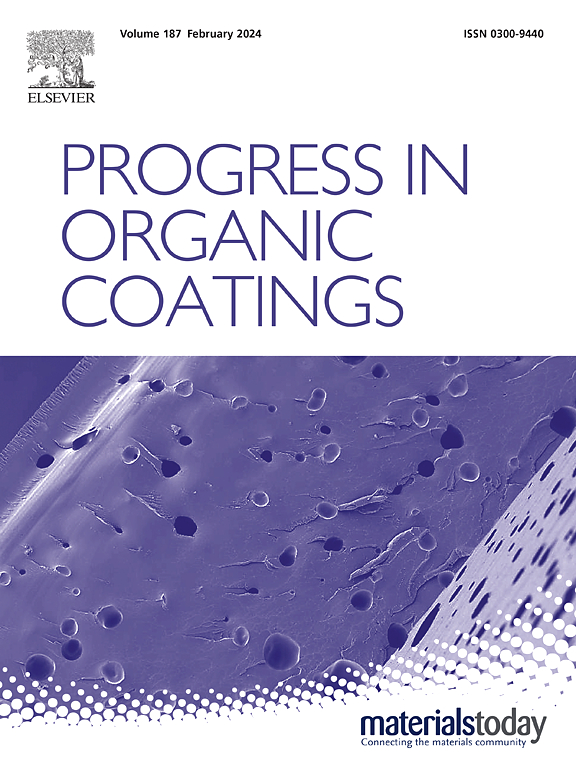Bionic sustainable superhydrophobic coating featuring high durability, antifouling, and anticorrosion properties
IF 6.5
2区 材料科学
Q1 CHEMISTRY, APPLIED
引用次数: 0
Abstract
Bionic microstructured surfaces, especially superhydrophobic surfaces, have been widely used in antifouling and anticorrosion. However, all microstructured surfaces face the common problem of poor durability, which limits the development of bionic microstructures. While the microstructures of plants and animals are also fragile, they are able to maintain their integrity through biological processes such as metabolism. Inspired by biological metabolism, this paper proposes a novel approach to constructing microstructured surfaces. By utilizing the differences in wear resistance between different materials in the coating, microstructures are continuously generated on the surface during friction, allowing for the continuous renewal of the microstructure during wear, ensuring the integrity of the surface microstructure and function. The coating formed by the combination of different materials not only achieves sustainable microstructure but also combines the superhydrophobicity of lotus leaves, the anti-adhesive properties of shark skin, and the “brick-and-mortar” structure of nacre, which effectively enhance the antifouling and anticorrosion performance of the coating. Based on this concept, an EP-PE superhydrophobic coating was developed using epoxy resin and polyethylene, exhibiting high mechanical properties as well as effective antifouling and anticorrosion capabilities. More importantly, the sustainable superhydrophobic coating can maintain the integrity of microstructure similar to living organism, which truly achieves the sustainability of the surface microstructure.

求助全文
约1分钟内获得全文
求助全文
来源期刊

Progress in Organic Coatings
工程技术-材料科学:膜
CiteScore
11.40
自引率
15.20%
发文量
577
审稿时长
48 days
期刊介绍:
The aim of this international journal is to analyse and publicise the progress and current state of knowledge in the field of organic coatings and related materials. The Editors and the Editorial Board members will solicit both review and research papers from academic and industrial scientists who are actively engaged in research and development or, in the case of review papers, have extensive experience in the subject to be reviewed. Unsolicited manuscripts will be accepted if they meet the journal''s requirements. The journal publishes papers dealing with such subjects as:
• Chemical, physical and technological properties of organic coatings and related materials
• Problems and methods of preparation, manufacture and application of these materials
• Performance, testing and analysis.
 求助内容:
求助内容: 应助结果提醒方式:
应助结果提醒方式:


